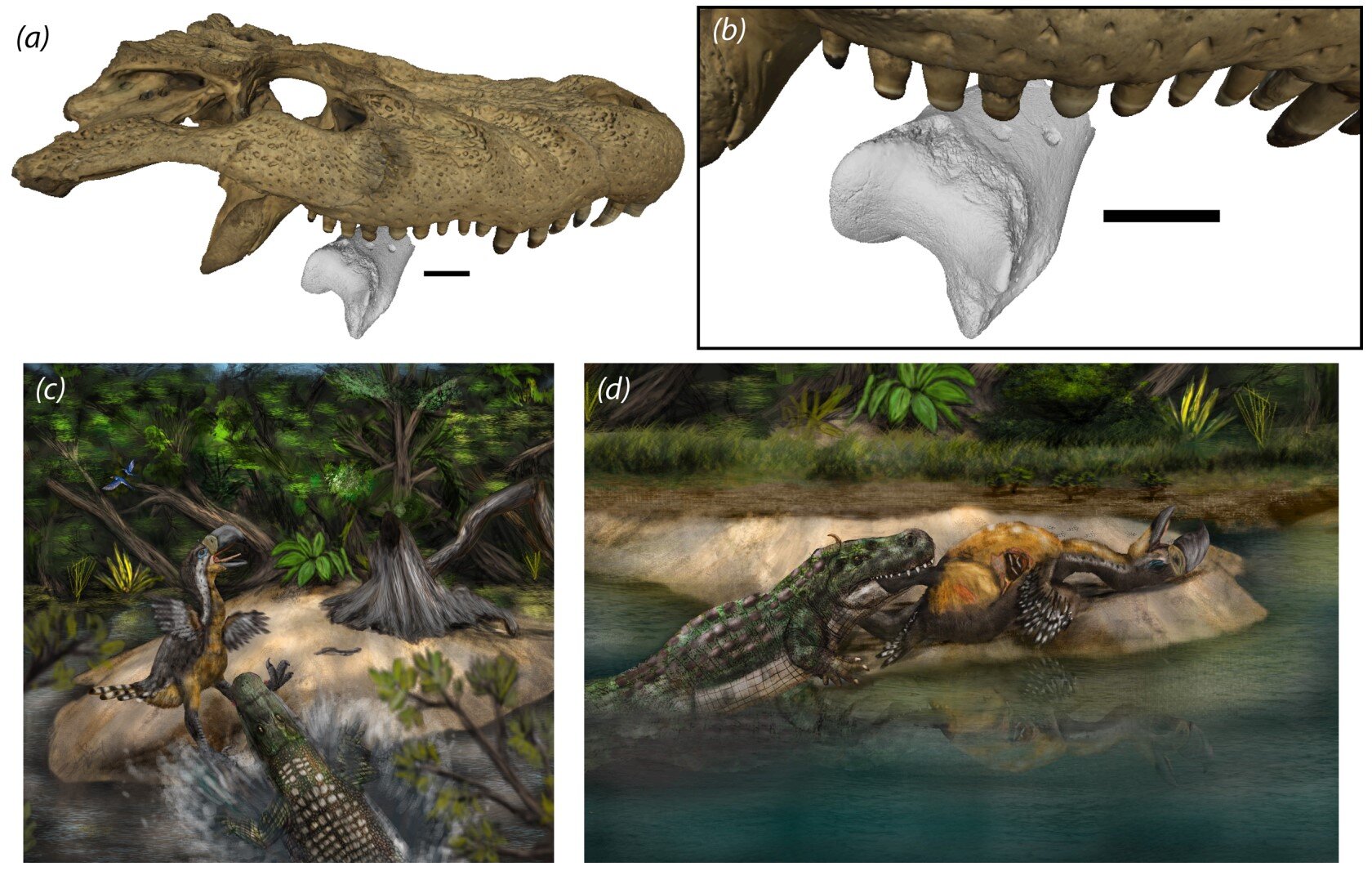
Ancient caiman may have preyed on another apex predator—the giant ‘terror bird’
How did your country report this? Share your view in the comments.
Diverging Reports Breakdown
Ancient caiman may have preyed on another apex predator—the giant ‘terror bird’
A terror bird’s leg bone was found to have tooth marks that resulted in the bird’s death. The marks most closely match a caiman species called Purussaurus neivensis. Until this finding, there had been little evidence that these predators ever interacted with each other. The frequency of apex predator encounters like this remains unknown, and there is still some uncertainty around whether the reptile was a Purussosaurus nevensis or another similar species. Still, this finding provides a rare glimpse into the complex world of prehistoric ecosystems and predator-prey dynamics, showing that even giant terror birds might be subject to attacks from other predators. If you want to support independent science journalism, please consider a donation (especially monthly). You’ll get an ad-free account as a thank-free as a result of your support. For confidential support call the Samaritans on 08457 90 90 90, visit a local Samaritans branch or see www.samaritans.org.
(a) Superimposed 3D models of MT−0200 and a skull of extant black caiman (Melanosuchus niger UF-Herp-53600). Both models at the same scale, the M. niger model is archived on Morphosource (https://doi.org/10.17602/M2/M359353). Total length estimated for the specimen of M. niger is 4.84 meters and is used here as an analogy to a medium sized Purussaurus (skull or mandible not available) [49]. Scale bar is 50 mm. (b) Detail of the superimposed model, showing the close match between the teeth of UF-Herp-53600 and the tooth marks on MT-0200. Scale bar is 50 mm. (c) Artistic representation of a caimanine alligatorid (Purussaurus neivensis) preying on a large phorusrhacid bird. (d) Artistic representation of a caimanine alligatorid (Purussaurus neivensis) scavenging on a large phorusrhacid bird. Illustrations by Julian Bayona Becerra. Credit: Biology Letters (2025). DOI: 10.1098/rsbl.2025.0113
The La Venta fossil site in Colombia is home to a rich fossil record, yielding a particularly diverse set of vertebrate fossil assemblages. The giant terror bird (phorusrhacid) and caiman—a large crocodile-like reptile—were known to be two of the apex predators roaming this region during the middle Miocene epoch. Although the terror bird was a terrestrial predator and the caiman was an aquatic predator, new evidence shows that they occasionally crossed paths, and that these meetings did not go well for the terror bird.
A new study, published in Biology Letters, details the analysis of a terror bird’s leg bone, which was found to have a set of tooth marks that resulted in the bird’s death. Until this finding, there had been little evidence that these predators ever interacted with each other. However, the study authors note that terrestrial and aquatic predators may have met at certain times.
“Terrestrial apex predators may preferentially wander close to water sources—especially in dry seasons—as these areas may set an ideal scenario for terrestrial predators to feed on aquatic taxa, or to attempt to prey on other taxa obliged to drink water from water sources. Thus, aquatic predators can prey on terrestrial vertebrates—including apex predators—as they approach water sources, similar to what is known from aquatic water holes in Africa,” the researchers write.
The fossilized bone of the terror bird was found with four distinct tooth marks. The researchers analyzed the marks using 3D surface scanning and digital modeling and found them to most closely match a caiman species called Purussaurus neivensis, a species which was native to the La Venta area around the same time the terror bird existed.
The tooth marks showed no signs of healing, meaning the terror bird died around the time of the encounter. However, the researchers note that it’s possible that the bite could have occurred after the death of the bird, as a scavenging event rather than direct predation. Either way, it was clear that the terror bird did not go on to live after the encounter.
The frequency of apex predator encounters like this remains unknown, and there is still some uncertainty around whether the reptile was a Purussaurus neivensis or another similar species. Still, this finding provides a rare glimpse into the complex world of prehistoric ecosystems and predator-prey dynamics, showing that even giant terror birds might be subject to attacks from other predators.
Written for you by our author Krystal Kasal, edited by Gaby Clark, and fact-checked and reviewed by Andrew Zinin—this article is the result of careful human work. We rely on readers like you to keep independent science journalism alive. If this reporting matters to you, please consider a donation (especially monthly). You’ll get an ad-free account as a thank-you.
More information: Andres Link et al, Direct evidence of trophic interaction between a crocodyliform and a large terror bird in the Middle Miocene of La Venta, Colombia, Biology Letters (2025). DOI: 10.1098/rsbl.2025.0113 Journal information: Biology Letters
© 2025 Science X Network
Source: https://phys.org/news/2025-07-ancient-caiman-preyed-apex-predator.html
